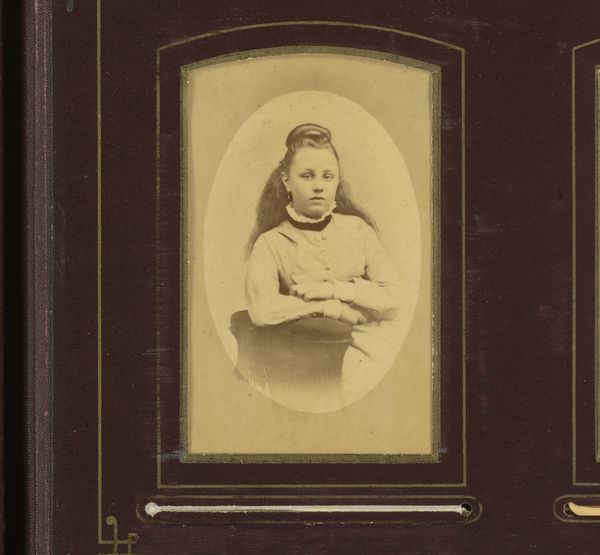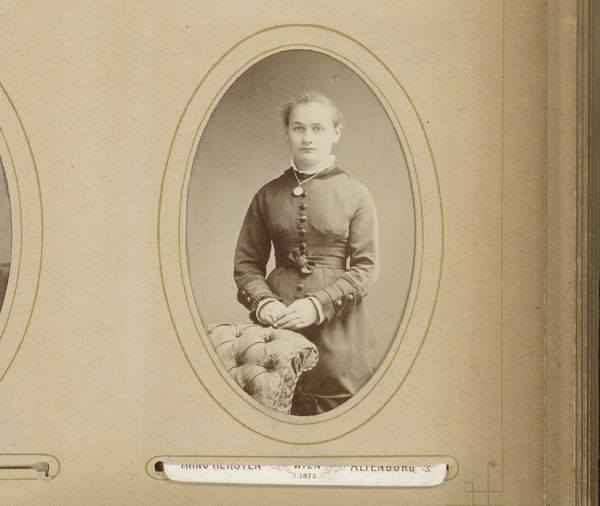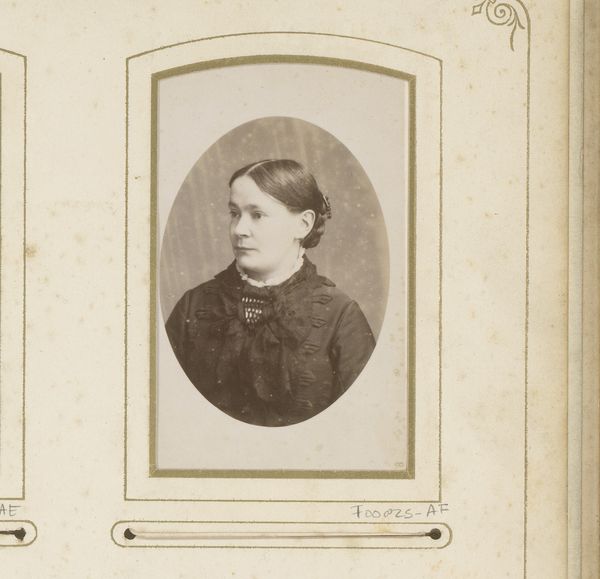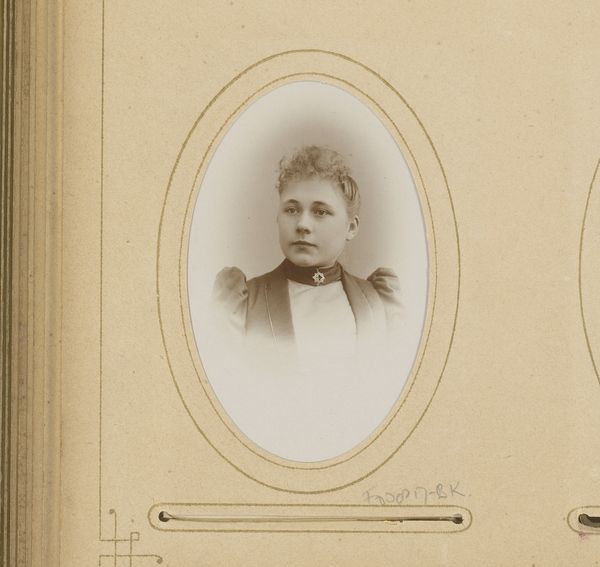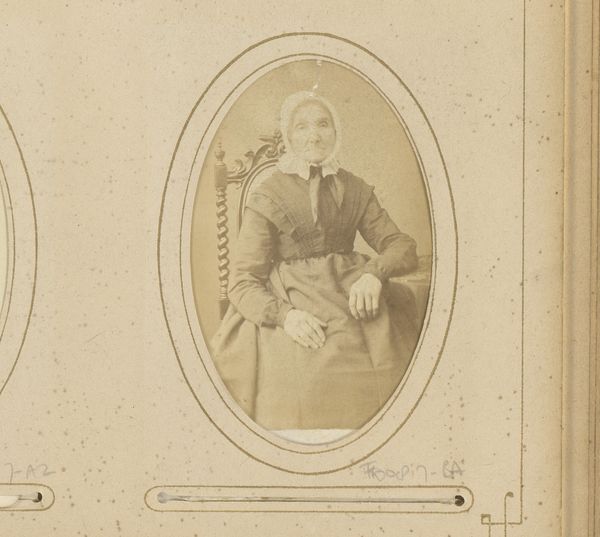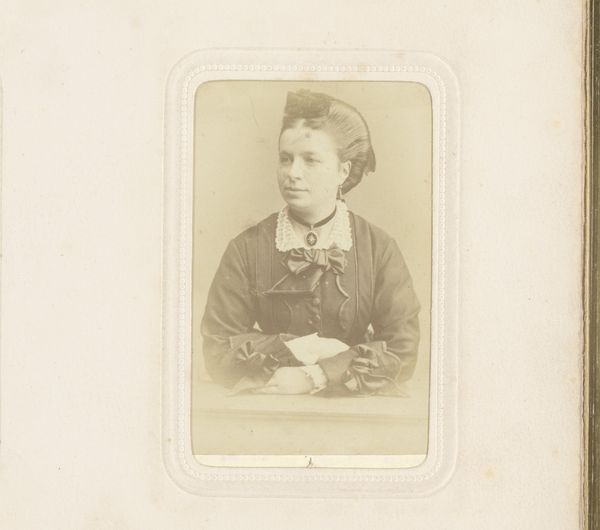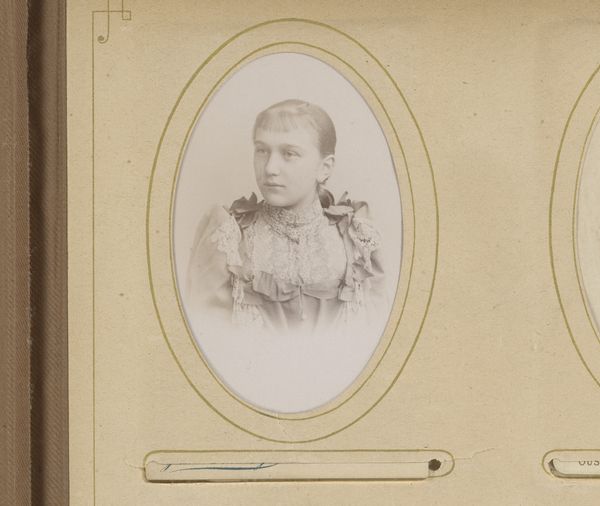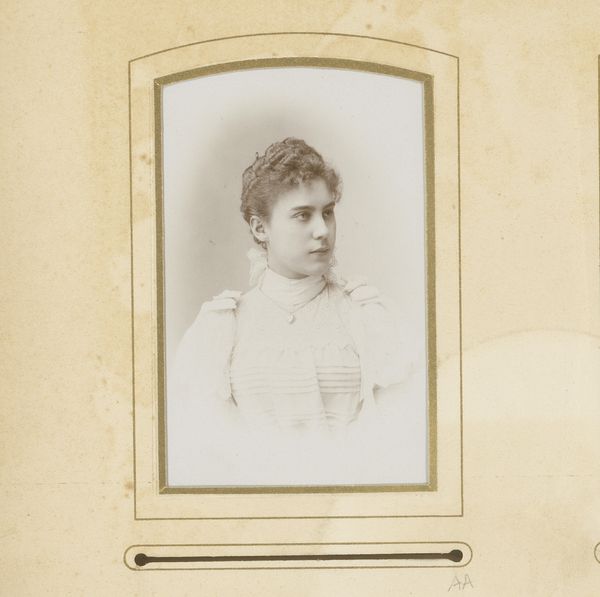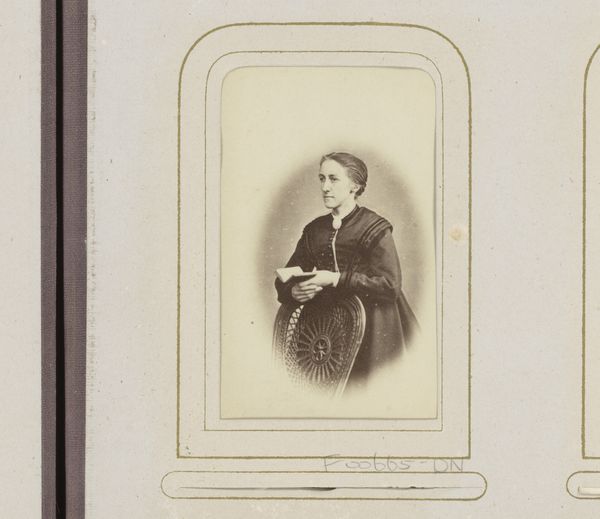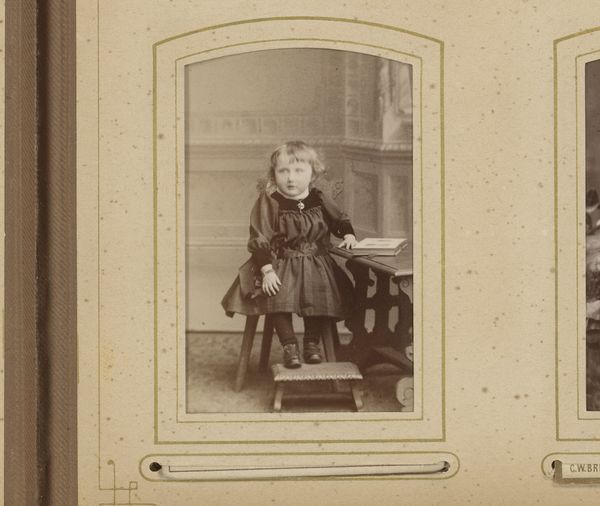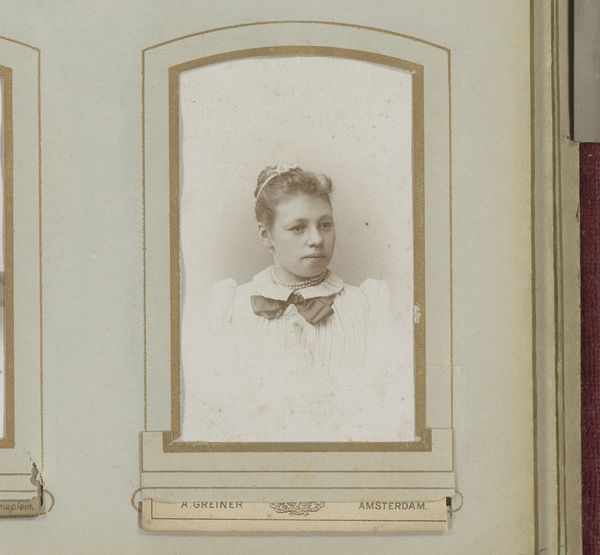
photography
#
portrait
#
aged paper
#
toned paper
#
aged
#
vintage
#
photo restoration
#
pictorialism
#
colourisation
#
archive photography
#
photography
#
historical photography
#
old-timey
#
19th century
Dimensions: height 82 mm, width 51 mm
Copyright: Rijks Museum: Open Domain
Curator: We’re looking at “Portret van een meisje, leunend op een stoel met bont,” a photograph created sometime between 1860 and 1900, attributed to Debenham & Gould. Editor: It's arresting, isn't it? The slightly faded tones lend a melancholic air. The girl seems to be looking right through me. Curator: Absolutely. This photograph gives us a window into the studio portraiture of the late 19th century. The presence of the fur and the somewhat rigid pose point toward a performance of class and status. This reflects the societal pressures of the time where photography served as both an object of personal memory and a public declaration of identity. Editor: I wonder about the girl's perspective, though. Was she complicit in this performance? Or a reluctant participant in a symbolic tableau representing Victorian ideals of womanhood? The tight dress seems restrictive, her grip on the fur, perhaps unconsciously conveying a sense of discomfort. Curator: That's an astute observation. These types of formal portraits had very rigid gendered norms. Middle to upper-class girls were expected to represent themselves in very particular ways. Elements such as attire and pose underscored not just wealth but decorum and femininity. Editor: The staging here, in particular, fascinates me. It's as if the photographer wanted to convey not just the image of a specific individual, but also, to offer the era's aesthetic sensibilities for constructing feminity itself. Is this an individual being portrayed, or an idealized vision projected onto an anonymous young woman? The lack of personalization draws an emphasis on her presentation, like a living doll encased in the perfect setting of the oval frame. Curator: I completely agree, and the photograph exists now as this layered thing. On the one hand, it gives us the opportunity to look at the social history of the image. And at the same time it poses complicated questions for modern viewers of thinking about issues of gender identity as performance, self-representation, the role of clothing, and the cultural norms related to beauty standards and the cultural expectation of youth. Editor: Yes, despite the apparent stillness and conventionality of the piece, I think what strikes me most is its continued potential to stir up dialogues about historical versus contemporary images of girlhood. Curator: Exactly. I appreciate that we can view historical photography not just as a preserved memory, but as an archive that provokes vital critical dialogue about representation, identity, and power.
Comments
No comments
Be the first to comment and join the conversation on the ultimate creative platform.
